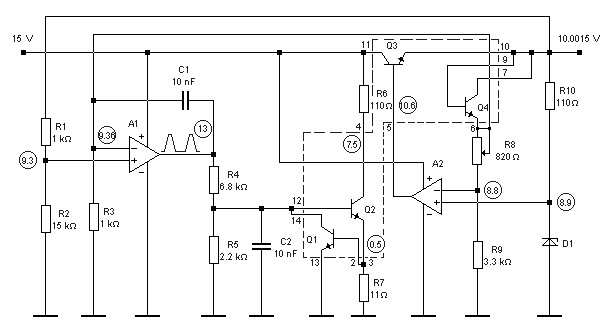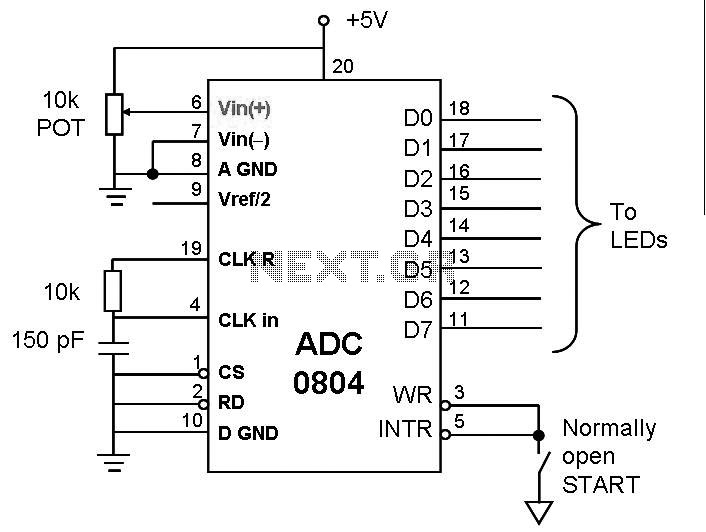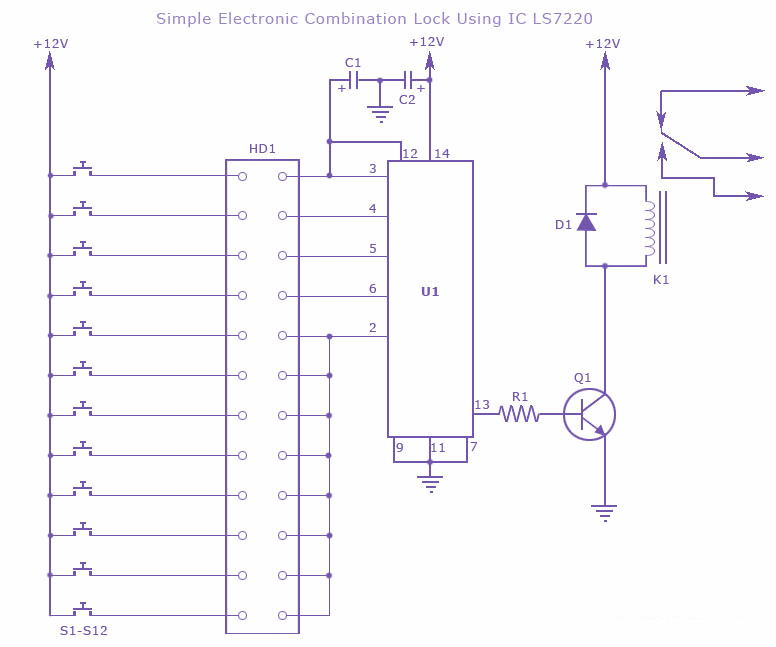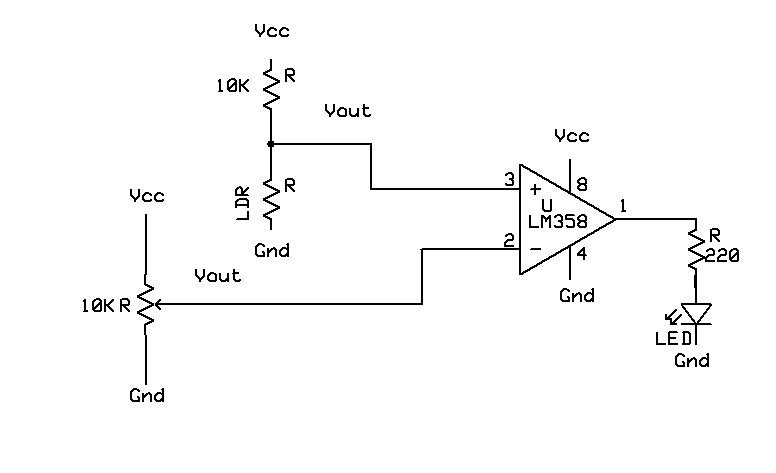
Buck Boost converter using LTC3440 for an output voltage of 3.3 volts
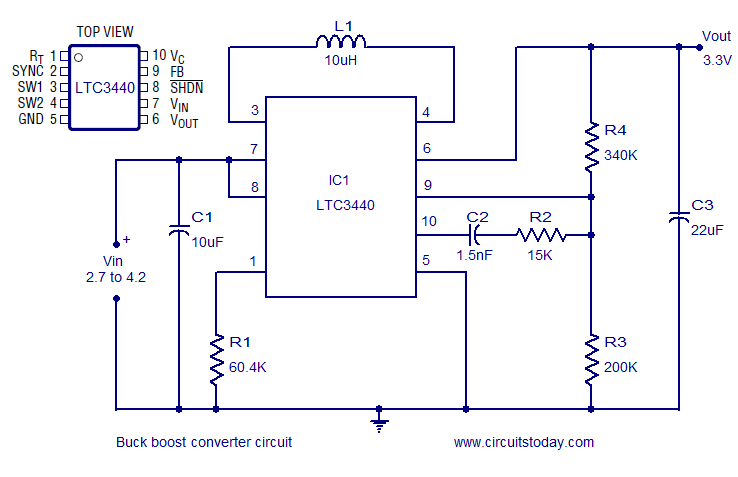
A simple and highly efficient buck-boost converter is implemented using the LTC3440 integrated circuit. The output voltage is set at 3.3V, while the input voltage range can vary from 2.7V to 4.2V.
The LTC3440 is a synchronous buck-boost converter designed for applications requiring a stable output voltage from a varying input voltage. This device is particularly useful in battery-powered applications where the input voltage may fluctuate as the battery discharges.
The buck-boost topology allows the converter to step down (buck) or step up (boost) the input voltage to maintain a constant output voltage of 3.3V. This is achieved through the use of two internal power switches (one for bucking and one for boosting), which are controlled by a pulse-width modulation (PWM) scheme. The switching frequency can typically be set to optimize efficiency and minimize component size.
In this configuration, the input voltage of 2.7V to 4.2V is connected to the input pin of the LTC3440. The output pin is connected to the load, which requires a stable 3.3V supply. The converter's feedback loop continuously monitors the output voltage and adjusts the duty cycle of the PWM signal to regulate the output voltage effectively.
Key components that may be included in this design are input and output capacitors, which help to filter voltage spikes and maintain stability during load transients. Additionally, an inductor is required to store energy and facilitate the conversion process, while diodes are used to direct the current flow appropriately during the switching cycles.
Overall, the LTC3440 buck-boost converter provides a compact and efficient solution for applications needing a regulated output voltage, ensuring reliable performance across a wide range of input voltages.A simple a very efficient buck boost converter implemented using LTC344o IC . The output voltage is 3.3V and input can be between 2.7 to 4.2 volts.. 🔗 External reference
The LTC3440 is a synchronous buck-boost converter designed for applications requiring a stable output voltage from a varying input voltage. This device is particularly useful in battery-powered applications where the input voltage may fluctuate as the battery discharges.
The buck-boost topology allows the converter to step down (buck) or step up (boost) the input voltage to maintain a constant output voltage of 3.3V. This is achieved through the use of two internal power switches (one for bucking and one for boosting), which are controlled by a pulse-width modulation (PWM) scheme. The switching frequency can typically be set to optimize efficiency and minimize component size.
In this configuration, the input voltage of 2.7V to 4.2V is connected to the input pin of the LTC3440. The output pin is connected to the load, which requires a stable 3.3V supply. The converter's feedback loop continuously monitors the output voltage and adjusts the duty cycle of the PWM signal to regulate the output voltage effectively.
Key components that may be included in this design are input and output capacitors, which help to filter voltage spikes and maintain stability during load transients. Additionally, an inductor is required to store energy and facilitate the conversion process, while diodes are used to direct the current flow appropriately during the switching cycles.
Overall, the LTC3440 buck-boost converter provides a compact and efficient solution for applications needing a regulated output voltage, ensuring reliable performance across a wide range of input voltages.A simple a very efficient buck boost converter implemented using LTC344o IC . The output voltage is 3.3V and input can be between 2.7 to 4.2 volts.. 🔗 External reference

